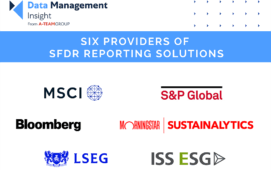The International Swaps and Derivatives Association, Inc. (ISDA) today published a new analysis of counterparty credit risk management in the US over-the-counter (OTC) derivatives markets. The paper examines the extent of counterparty credit losses and notes the efficacy of credit mitigation techniques in the US banking system.
The paper states that according to reports published by the Office of the Comptroller of the Currency (OCC), US bank losses on OTC derivatives products due to counterparty defaults totaled less than $2.7 billion since 2007.
It also notes that risk management processes such as netting and collateralization significantly reduce US banks’ net current credit exposure (NCCE). In fact, netting and collateralization decrease the NCCE of the US banking system to $107 billion, or 4 basis points (0.04%) of notionals outstanding. Less than one-third of this amount — or approximately $30 billion — is with entities covered by The Dodd-Frank Act’s requirements on margining and clearing.
“The OCC Reports and ISDA’s analysis demonstrate that the credit risk losses and exposure of US banks related to derivatives are quite manageable,” said Conrad Voldstad, ISDA chief executive officer. “It’s also clear that a renewed focus on robust risk management practices — including netting, collateralization, clearing and portfolio compression — is helping to increase the safety and efficiency of OTC derivatives markets.”
As part of its research, ISDA also analyzed SEC reports of non-bank financial entities. This analysis indicates counterparty credit losses by non-bank financial entities relating to sub-prime mortgages and monolines dwarf the losses on plain vanilla OTC derivatives. The banks themselves were not excessively involved with toxic mortgage products in derivative form. ISDA believes the vast majority of OTC derivatives among the banks consists of simple, plain vanilla products. In addition, ISDA notes that credit losses were positively affected by actions of the Fed with respect to AIG, which prevented increased losses across several business lines, including mortgage derivatives products, and, potentially, cascading defaults from other counterparties not involved with mortgage derivatives.
ISDA drew upon data from the Office of the Controller of the Currency (OCC) Quarterly Report on Bank Trading and Derivatives Activities First Quarter 2011 for information regarding US banks. ISDA also examined SEC reports and intends to do a more exhaustive paper on industry losses pertaining to monoline insurance companies in the near future.
The full ISDA paper “Counterparty Credit Risk Management in the US Over-the-Counter (OTC) Derivatives Markets” is available on ISDA’s website.
Subscribe to our newsletter




